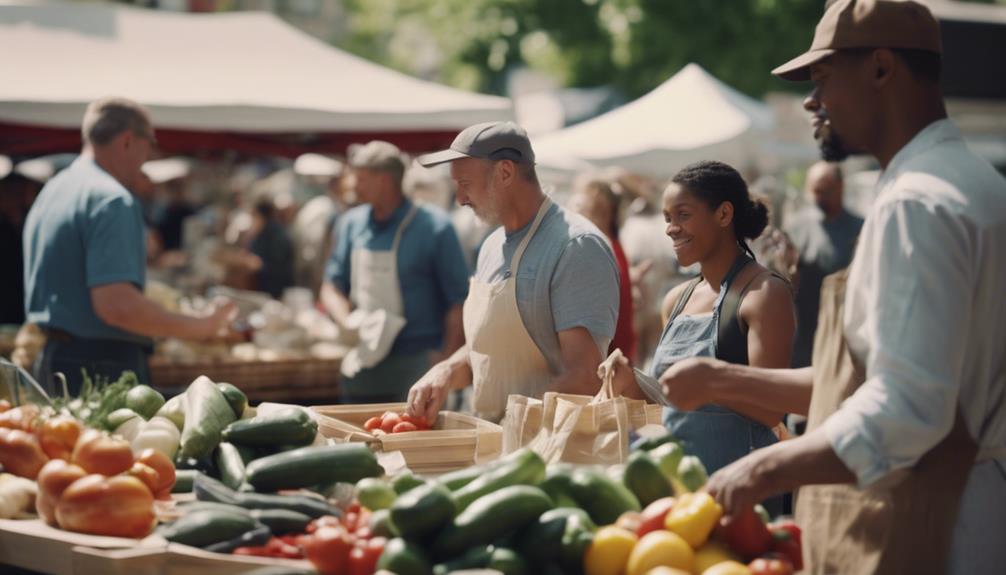To master pepper preservation and growing secrets, one must recognize the variety of peppers available, from mild to fiery. Effective preservation techniques include hang drying, freezing, and dehydrating peppers to maintain flavor and nutrients. Growing peppers requires selecting suitable varieties for the local climate, ensuring adequate water and sunlight, and harvesting at peak ripeness for intense flavor. Additionally, peppers are rich in vitamins and can enhance health. By mastering these aspects, anyone can enjoy their vibrant flavors and health benefits all year round. There's so much more to uncover on this flavorful journey. For those seeking advanced **pepper cultivation tips**, it’s important to consider soil quality and drainage, as peppers thrive in well-drained, nutrient-rich environments. Regular pruning can also promote better airflow and prevent diseases, leading to healthier plants and more abundant yields. With the right care, peppers can be a fruitful and flavorful addition to any gardener’s repertoire.
Key Takeaways
- Choose pepper varieties that thrive in your local climate and soil for successful growth and maximum flavor.
- Regularly water and provide plenty of sunlight to ensure optimal growth and ripeness.
- Use techniques like hang drying, dehydrating, or freezing to preserve peppers while maintaining their flavor and nutrition.
- Always wear gloves when handling hot peppers to avoid skin irritation from capsaicin.
Understanding Pepper Varieties
Understanding the diverse world of pepper varieties reveals a spectrum of flavors and heat levels that can enhance any dish.
From the mild sweetness of bell peppers in various colors to the fiery intensity of ghost peppers, each type brings unique attributes to cooking.
Chili peppers are measured on the Scoville heat scale, showcasing their varying degrees of spiciness, which comes from the compound capsaicin.
Banana peppers offer a gentle heat, making them ideal for salads or sandwiches.
For those seeking extreme heat, ghost peppers provide an unforgettable kick.
Techniques for Preserving Peppers
Several effective techniques exist for preserving peppers, ensuring their flavor and nutritional benefits last long after the harvest.
One popular method is hang drying, where peppers are threaded and left to dry until they turn dark red and crinkly.
Dehydrating is another option; by placing peppers in a dehydrator at 125 degrees, they can be stored as crispy or leathery snacks.
Freezing provides an easy way to keep peppers fresh. Simply cut them into manageable pieces and store them in freezer bags, ready for cooking or snacking.
Regardless of the method chosen, wearing gloves is advised to prevent skin irritation from capsaicin, as washing hands won't eliminate the heat completely.
Making Fresh Pepper Salsa

To create a delicious fresh pepper salsa, one can combine vibrant ingredients like tomatoes, peppers, onions, and herbs for a flavorful kick.
Start by peeling the tomatoes, scalding them in boiling water, then immersing in ice water. Dice the fresh peppers, choosing varieties based on desired heat levels.
Chop onions and cilantro, adding a touch of oregano, salt, and cumin for depth. Toss everything together in a bowl and drizzle with cider vinegar for tanginess.
For a smoother salsa, blend the mixture to the preferred consistency. If preserving, boil the salsa and simmer for ten minutes before canning.
Confirm proper sealing by listening for the satisfying 'ping' after processing. Enjoy fresh salsa with chips or as a topping!
Health Benefits of Peppers
Packed with crucial vitamins and compounds, peppers offer a range of health benefits that can enhance overall well-being. They're rich in vitamins A, C, and E, which support immune function, skin health, and antioxidant activity.
Cayenne peppers, in particular, may help reduce heart attack risk and promote blood circulation. The active compound capsaicin provides potential anti-inflammatory properties, making peppers a significant addition for those seeking natural remedies.
Regular consumption of peppers is linked to improved metabolism, aiding in weight management as well. Furthermore, the variety of peppers available allows for enhanced diet diversity, ensuring a broader intake of nutrients.
Incorporating peppers into meals is a delicious way to boost one's health and vigor.
Growing and Harvesting Peppers

Growing peppers successfully requires selecting varieties that thrive in the local climate and soil conditions.
Gardeners should assure regular watering and ample sunlight, as these factors are essential for ideal growth.
As peppers near maturity, they should be monitored closely, with harvesting done at peak ripeness to guarantee maximum flavor and nutritional value.
For those interested in future planting, seed saving is a valuable practice; simply dry seeds and store them properly.
Harvesting can typically occur from late summer to early fall, depending on the variety.
November is recognized as National Pepper Month, a perfect time to celebrate and appreciate the vibrant flavors and health benefits peppers bring to the table.
Frequently Asked Questions
How Do I Choose the Right Pepper Variety for My Recipe?
To choose the right pepper variety for a recipe, she considers the dish's flavor profile and desired heat level. Sweet bell peppers complement mild dishes, while chili varieties enhance spicy recipes, offering diverse options.
Can I Use Dried Peppers in Fresh Salsa Recipes?
He can use dried peppers in fresh salsa recipes, but they'll need rehydration first. Soaking them in warm water allows the flavors to infuse, enhancing the salsa's taste while adding a delightful kick.
What Are the Best Companion Plants for Growing Peppers?
When it comes to nurturing peppers, a harmonious garden thrives. Basil, tomatoes, and onions make delightful companions, enhancing growth and flavor. They'll help create a vibrant ecosystem, ensuring peppers flourish in their cozy, sunny abode.
How Long Can Preserved Peppers Last in Storage?
Preserved peppers can last up to a year in a cool, dark place when properly stored. If frozen, they maintain quality for about six months. Regular checks guarantee they stay safe and flavorful for consumption.
Are There Any Specific Pests That Commonly Affect Pepper Plants?
When growing peppers, gardeners often encounter pests like aphids, spider mites, and whiteflies. These pests can damage plants, but with proper monitoring and organic pest control methods, they can be effectively managed to guarantee healthy growth.
Conclusion
To sum up, mastering the art of pepper preservation and cultivation opens up a world of culinary possibilities.
By learning various techniques and understanding the unique characteristics of each variety, enthusiasts can savor the fruits of their labor long after harvest.
With a little bit of patience and care, they can turn their pepper patch into a thriving garden.
So, roll up your sleeves and get ready to spice up your kitchen and garden, because the sky's the limit!










